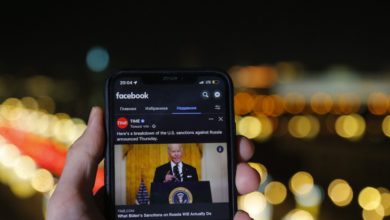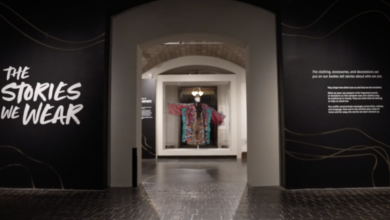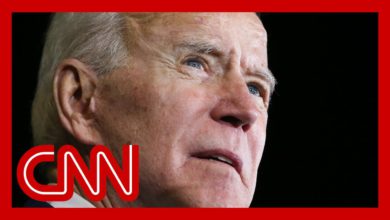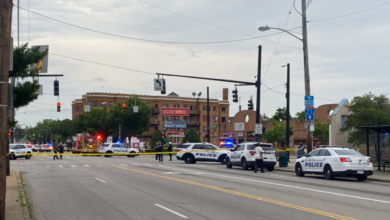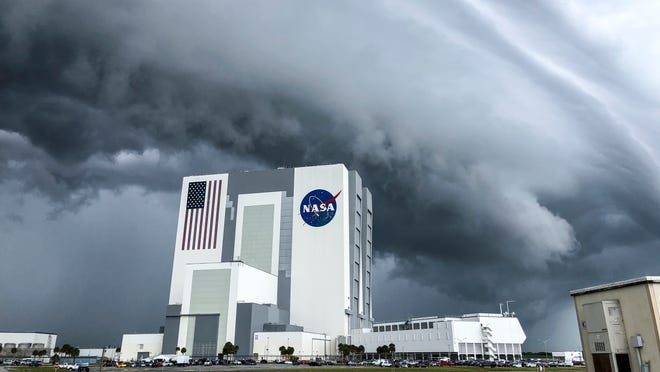
Russia destroyed a satellite on Monday, launching debris into space that allegedly endangered astronauts in the International Space Station and evoked a fierce debate between representatives in D.C. and Moscow.
The International Space Station Flight Control team was notified of indications of the satellite breakup, which said it could create sufficient debris and pose a threat to the station, according to NASA.
"Due to the debris generated by the destructive Russian Anti-Satellite (ASAT) test, ISS astronauts and cosmonauts undertook emergency procedures for safety," says NASA Administrator Bill Nelson in a statement.
The crew was awakened and directed to close certain hatches, and crew members took shelter in their spacecraft shortly before 2 a.m. EST and remained there until about 4 a.m. as a precautionary measure, based on a risk assessment made by the debris office and ballistics specialists at NASA's Johnson Space Center in Houston.
No astronauts have been injured, according to NASA.
"With its long and storied history in human spaceflight, it is unthinkable that Russia would endanger not only the American and international partner astronauts on the ISS, but also their own cosmonauts," Nelson said in a statement.
Who is on the ISS now?
Currently, there are seven astronauts on the International Space Station: Anton Shkaplerov, Mark Vande Hei, Pyotr Dubrov, Raja Chari, Thomas Marshburn, Matthias Maurer and Kayla Barron.
Shkaplerov and Dubrov are Russian, and Maurer is German.
The other four of the astronauts — Hei, Chari, Marshburn, Barronare — are American.
Hei served as a combat engineer for the U.S. Army and later became a physics professor at West Point. Chari graduated from the U.S. Air Force Academy and U.S. Naval Test Pilot School and also earned a master’s degree in Aeronautics and Astronautics from Massachusetts Institute of Technology.
Two of the American astronauts were part of the NASA SpaceX Crew-3 mission that launched last week. Marshburn is a medical doctor that serves as the Medical Operations Lead for the ISS. He is also currently serving as pilot of the NASA SpaceX Crew-3 mission to the ISS. Barron is a U.S. Naval Academy graduate and a member of the first class of women commissioned into the submarine community as a Submarine Warfare Officer. She is currently a mission specialist of the NASA SpaceX Crew-3 flight.
The challenge of space debris
"Space debris is a key concern that could threaten space exploration plans. You should notice that this incident generated 1,500 ‘trackable orbital debris,’ which is quite different from ‘tracked orbital debris," says Franck Marchis, Chief Scientific Officer at Unistellar and Senior Planetary Astronomer at SETI Institute, a not-for-profit research organization studying the origin of life in space.
A similar weapons test by China in 2007 also resulted in debris. One of those pieces threatened to come dangerously close to the space station last week. While it later was dismissed as a risk, NASA had the station move anyway.
"The daunting task of monitoring that amount of new debris, along with the debris that already exists in space, will be unmanageable with traditional big telescope infrastructures. The growing network of small, ‘smart’ digital telescopes is key to ensuring space exploration is accessible and safe," Marchis says.
Regarding the current incident, Nelson said in a statement, "NASA will continue monitoring the debris in the coming days and beyond to ensure the safety of our crew in orbit."
Mixed reactions from U.S. and Russia
The incident evoked strong reactions from both representatives in the U.S. and their counterparts in Russia.
U.S. Secretary of State Antony Blinken openly condemned Russia for its actions and said satellites were also now in jeopardy.
The test demonstrates that Russia "despite its claims of opposing the weaponization of outer space, is willing to ... imperil the exploration and use of outer space by all nations through its reckless and irresponsible behavior,” Blinken said in a statement.
"I'm outraged by this irresponsible and destabilizing action," Nelson said. "Their actions are reckless and dangerous, threatening as well the Chinese space station and the taikonauts on board."
Nelson said the astronauts now face four times greater risk than normal. And that's based on debris big enough to track, with hundreds of thousands of smaller pieces going undetected — “any one of which can do enormous damage if it hits in the right place.”
State Department spokesman Ned Price said the U.S. has repeatedly raised concerns with Russia about doing a satellite test.
“We are going to continue to make very clear that we won’t tolerate this kind of activity,” he told reporters.
Russian officials on Tuesday rejected accusations that they endangered astronauts aboard the ISS by conducting a weapons test that created more than 1,500 pieces of space junk.
Russia’s Defense Ministry on Tuesday confirmed carrying out a test and destroying a defunct satellite that has been in orbit since 1982, but insisted that “the U.S. knows for certain that the resulting fragments, in terms of test time and orbital parameters, did not and will not pose a threat to orbital stations, spacecraft and space activities.” It called remarks by U.S. officials “hypocritical.”
Defense Minister Sergei Shoigu said the strike was carried out “with surgical precision” and posed no threat to the space station.
The Russian Space Agency said via Twitter that the astronauts were ordered into their docked capsules, in case they had to make a quick getaway. The agency said the crew was back doing routine operations, and the space station’s commander, Russian Anton Shkaplerov, tweeted: “Friends, everything is regular with us!”
Contributing: The Associated Press
Michelle Shen is a Money & Tech Digital Reporter for USA TODAY. You can follow her @michelle_shen10 on Twitter.
Source link



